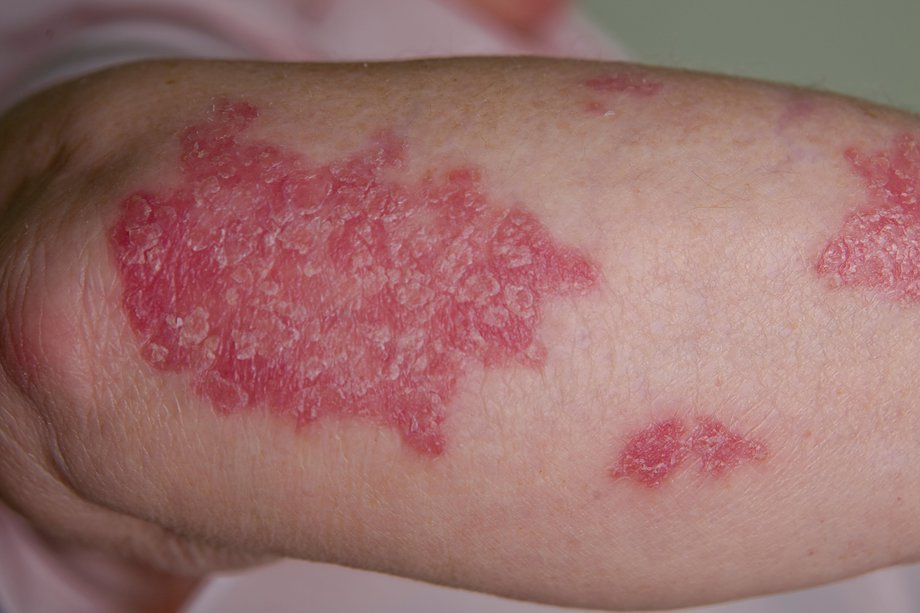SymptomsPsoriasis
Psoriasis typically causes patches of skin that are dry, red and covered in silver scales. Some people find their psoriasis causes itching or soreness.
There are several different types of psoriasis. Many people have only 1 form at a time, although 2 different types can occur together. One form may change into another or become more severe.
Most cases of psoriasis go through cycles, causing problems for a few weeks or months before easing or stopping.
You should see a GP if you think you may have psoriasis.
Common types of psoriasis
Plaque psoriasis (psoriasis vulgaris)

This is the most common form, accounting for about 80 to 90% of cases.
Its symptoms are dry red skin lesions, known as plaques, covered in silver scales.
They normally appear on your elbows, knees, scalp and lower back, but can appear anywhere on your body.
The plaques can be itchy or sore, or both. In severe cases, the skin around your joints may crack and bleed.
Scalp psoriasis
This can occur on parts of your scalp or on the whole scalp. It causes red patches of skin covered in thick, silvery-white scales.
Some people find scalp psoriasis extremely itchy, while others have no discomfort.
In extreme cases, it can cause hair loss, although this is usually only temporary.
Nail psoriasis
In about half of all people with psoriasis, the condition affects the nails.
Psoriasis can cause your nails to develop tiny dents or pits, become discoloured or grow abnormally.
Nails can often become loose and separate from the nail bed. In severe cases, nails may crumble.
Guttate psoriasis
Guttate psoriasis causes small (less than 1cm) drop-shaped sores on your chest, arms, legs and scalp.
There's a good chance guttate psoriasis will disappear completely after a few weeks, but some people go on to develop plaque psoriasis.
This type of psoriasis sometimes occurs after a streptococcal throat infection and is more common among children and teenagers.
Inverse (flexural) psoriasis
This affects folds or creases in your skin, such as the armpits, groin, between the buttocks and under the breasts.
It can cause large, smooth red patches in some or all these areas.
Inverse psoriasis is made worse by friction and sweating, so it can be particularly uncomfortable in hot weather.
Less common types of psoriasis
Pustular psoriasis
Pustular psoriasis is a rarer type of psoriasis that causes pus-filled blisters (pustules) to appear on your skin.
Different types of pustular psoriasis affect different parts of the body.
Generalised pustular psoriasis or von Zumbusch psoriasis
This causes pustules that develop very quickly on a wide area of skin. The pus consists of white blood cells and is not a sign of infection.
The pustules may reappear every few days or weeks in cycles. During the start of these cycles, von Zumbusch psoriasis can cause fever, chills, weight loss and fatigue.
Palmoplantar pustulosis
This causes pustules to appear on the palms of your hands and the soles of your feet.
The pustules gradually develop into circular, brown, scaly spots that then peel off.
Pustules may reappear every few days or weeks.
Acropustulosis
This causes pustules to appear on your fingers and toes.
The pustules then burst, leaving bright red areas that may ooze or become scaly. These may lead to painful nail deformities.
Erythrodermic psoriasis
Erythrodermic psoriasis is a rare form of psoriasis that affects nearly all the skin on the body. This can cause intense itching or burning.
Erythrodermic psoriasis can cause your body to lose proteins and fluid, leading to further problems such as infection, dehydration, heart failure, hypothermia and malnutrition.